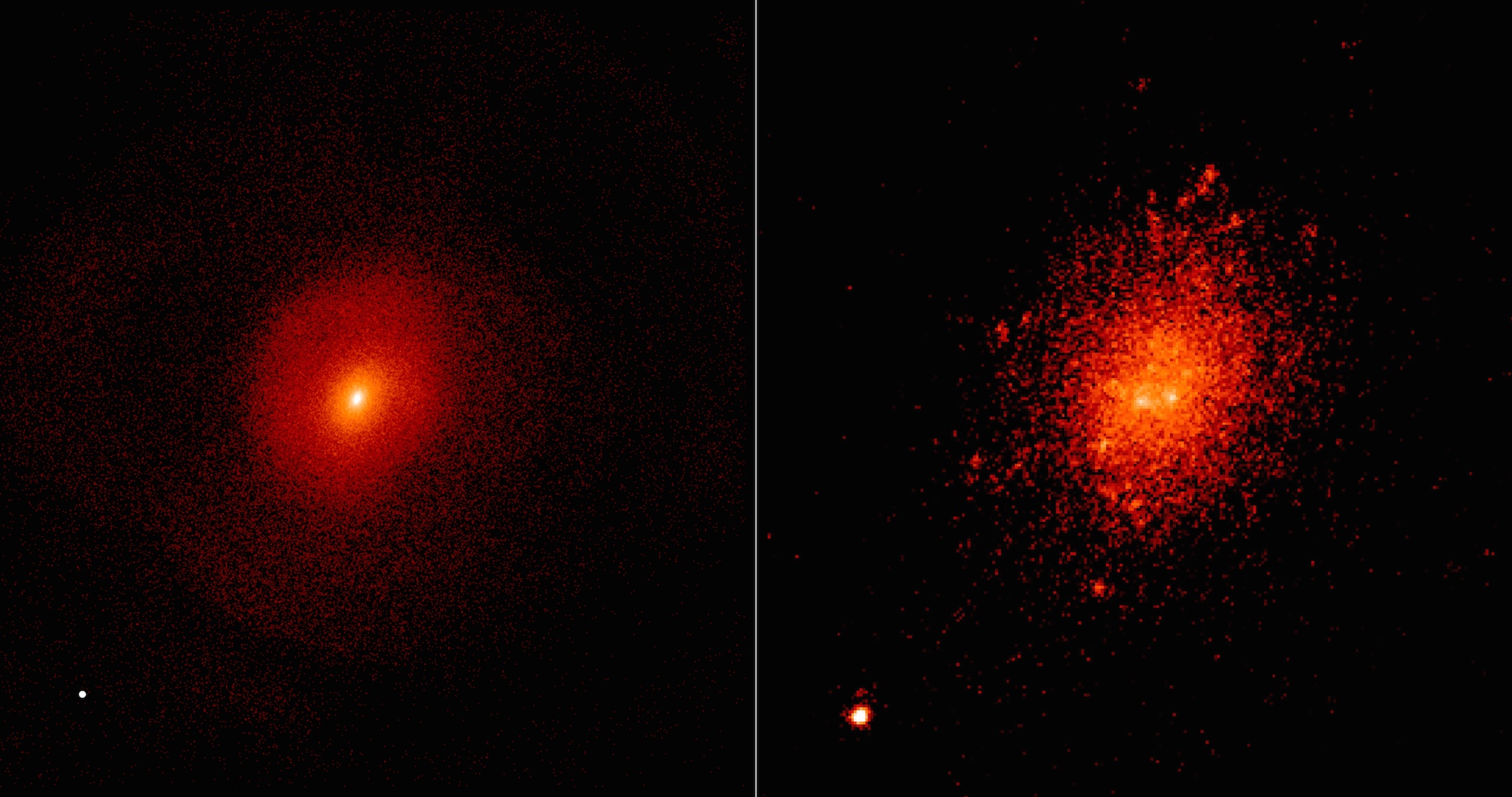Black Hole or Mega Star?

Scientists probe an exotic object in a distant galaxy.
Researchers analyzing decades of observations from astronomical surveys, including NASA's Swift satellite, have discovered an unusual source of light in a galaxy some 90 million light-years away. The source, called SDSS1133, is part of the dwarf galaxy Markarian 177. Astronomers believe SDSS1133 may be the remnant of a massive star that exploded as a supernova. Or it could be a supermassive black hole that was ejected from its home galaxy after merging with another giant black hole. To explore the black hole option, scientists ran a computer simulation of two colliding galaxies and compared the result to images of the mystery object. As the simulation shows, when the central black holes in these galaxies combine, they emit gravitational waves that create a "recoil kick," launching the merged black hole from the galaxy’s center. The location of the black hole in relation to the galaxy is consistent with what’s seen in ground-telescope images of SDSS1133, making it a good match for a supermassive black hole. Watch the video to see the simulation.
See how colliding galaxies could launch a newly formed supermassive black hole from their combined core in this simulation.

An image of Markarian 177 and SDSS1133 taken by the Keck II telescope (right) is shown beside the result of the galaxy merger simulation (left).

Twin bright spots in Markarian 177 are consistent with recent star formation, a disturbance that hints this galaxy may have merged with another.

The Sloan Digital Sky Survey telescope captured this image of dwarf galaxy Markarian 177 (center) and SDSS1133 (blue).
For More Information
See NASA.gov
Credits
Please give credit for this item to:
NASA's Goddard Space Flight Center
Video and simulation images courtesy of University of Maryland/L. Blecha
Keck II telescope images courtesy of W. M. Keck Observatory/M. Koss (ETH Zurich) et al.
-
Writer
- Francis Reddy (Syneren Technologies)
-
Producer
- Scott Wiessinger (USRA)
Release date
This page was originally published on Tuesday, October 20, 2015.
This page was last updated on Wednesday, May 3, 2023 at 1:49 PM EDT.
